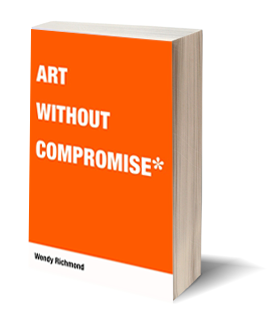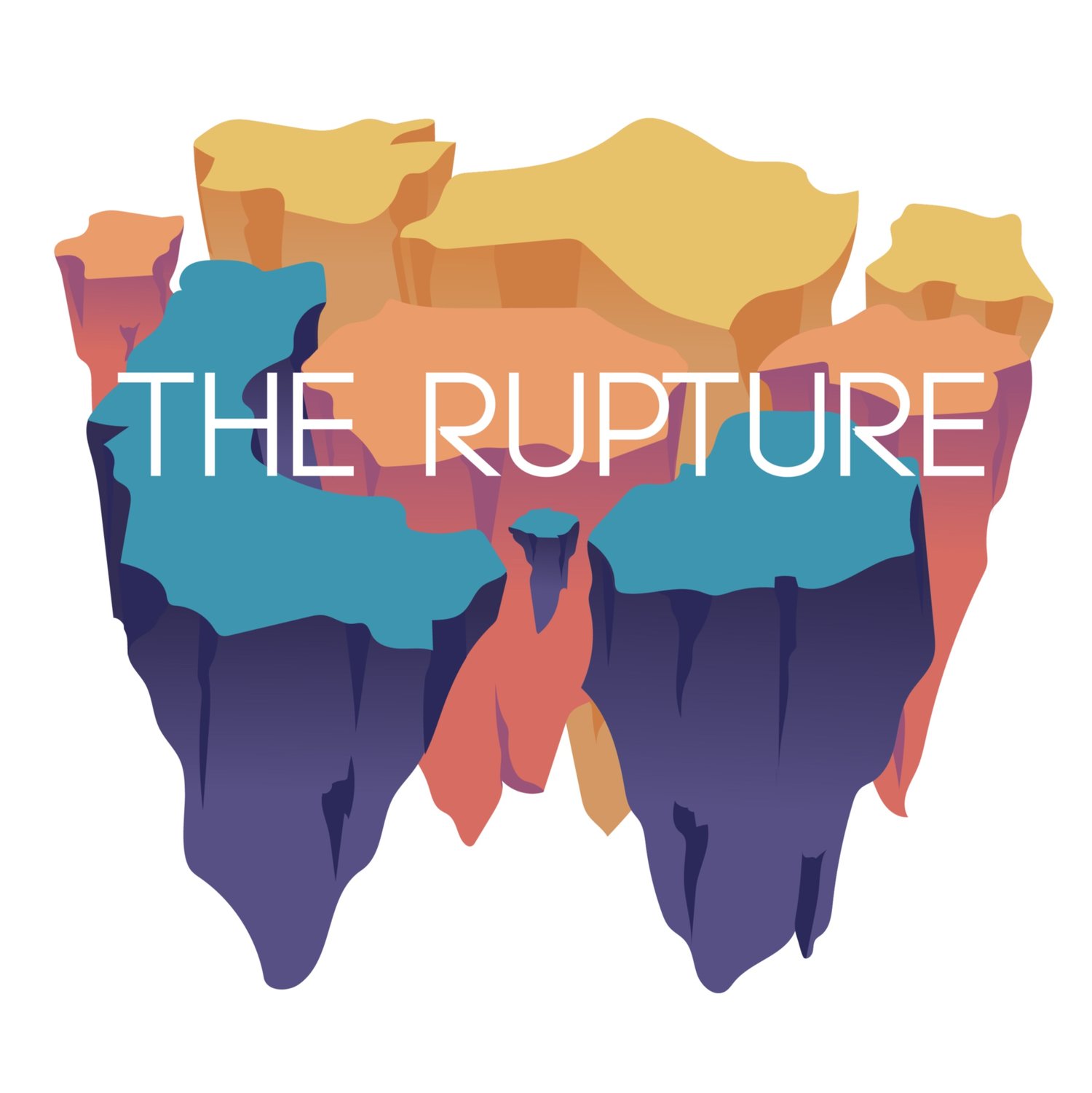Art Without Compromise*By Wendy Richmond |
 |
|---|
Reviewed by Jim Ruland
We’ve all had this experience: while sitting alone in a coffee shop working, reading or passing the time, we are interrupted by another patron’s cell phone conversation. It’s obnoxious. It’s aggravating. But for Wendy Richmond, it’s fodder for creative inspiration.
Take, for example, “Overheard” an installation that Wendy Richmond created in collaboration with Michael Chladil that I attended last month at Gallery@Calit2 on the University of California, San Diego’s campus. The work is based on snippets of cell phone conversations overheard in New York City, many of them at Starbucks. The fragments are projected on the gallery walls, displayed on small monitors throughout the art space, and played on audio loops triggered by sensors as the visitor moves through the installation. The loops aren’t recorded conversations, but taped performances by actors reading from transcripts.
Even though it was overwhelming, at first, to sort through the noise, my ear quickly honed in on individual voices. I learned to sift through the various strands of one-sided conversations. The installation empowered me to eavesdrop without fear of being caught. It was like being the proverbial Invisible Man.

The conversations, however, were boring. A recipe for chicken salad competed for news about a relative’s illness. Two rope and pulley systems permitted me to interact with the dialogue. One system manipulated the way the text was displayed; the other sped up or slowed down the recorded audio loop. After playfully pulling on the ropes for a while, I was struck by how the conversation I was collaborating with achieved a kind of primacy over the others. Suddenly, the banal details of a man’s visit to the auto shop didn’t seem so trivial anymore.
“Overheard” is a challenging piece. I visited the gallery during a private tour and had the space to myself, but I wished I could have seen other people interact with the installation. I imagine some people would hate it. A public space filled with the worst kind of noise: insipid chatter and relentless messaging, like a Starbucks from hell. Text displayed in enormous type adorns the walls outside the gallery, making it impossible to say for certain where the exhibit begins and where it ends.
On the way home, I thought about the constantly shifting boundaries between public space and private space. Why do some people feel comfortable sharing personal details in a crowded room full of strangers? When we are in public, why does it bother us when our private space is disrupted? Is the widespread use of personal electronic devices eroding public space?

In Art Without Compromise*, Richmond takes up these and many other questions. She’s been raising questions since 1984 when her first column “Design Culture” appeared in Communications Art magazine. With extensive experience as a conceptual artist, educator, and writer, her prose is refreshingly jargon free. Because her column is written for a wide audience, it’s as beneficial for the artist in his garret as the art director in her corner office. And this includes, I would argue, writers. But Art Without Compromise* is neither an anthology of Richmond’s best columns, nor a namby-pamby guide to “freeing the artist trapped within.” Richmond’s book isn’t for wannabes. Rather, it’s a manifesto of sorts that encourages creative people to question the way they think about their work, whatever that might be.
For starters, Richmond believes that many artists don’t ask themselves nearly enough questions. In a section called “Underlying Questions,” she asserts that it’s imperative “to have a clear understanding of what your work is ‘about.’ You need to be able to articulate its themes, how it developed, and where it is going.” Richmond believes the time to address these concerns is after the work is completed and before it is presented to the public. The artist who lacks an understanding of their work--where it came from and where it’s going--cannot make informed decisions about it. By contrast, the writer who has a clear vision of what they are trying to accomplish make choices not compromises. This is a key distinction, especially for creative professionals.
Furthermore, work that is “self-motivated” and “self-generated” must be “self-evaluated” and “self-judged,” otherwise the way it’s received, if it’s received at all, can influence the artist’s perception of it, which can be perilous to both the project and its creator’s growth. Other queries touch on where the work comes from, where it’s going, and its relevance to contemporary concerns.

Too often, creative people leave it up to the public to determine the value of a work. Visual artists are adept at explaining what their work is about, but most writers avoid this kind of self-analysis, preferring to let the work speak for itself. Incorporating these questions into your creative practice, Richmond argues, is “a way to find authenticity in your work.”
Clearly, Richmond is interested in context. At the opening to a chapter titled “Culture’s Frames and Filters,” she quotes Arthur Ollman, “Culture is like 98 degrees. It’s sticky and you can’t help getting it on you.” Richmond is fascinated by all the ways our work is influenced by the world around us. If a design is deemed good or bad she wants to understand why. She’s fascinated by the way technology affects the way we communicate with others. If she experiences a visceral reaction at a Holocaust memorial, for example, she endeavors to make sense of all the factors that contribute to her response. For Richmond, a chair isn’t just a chair, but an accumulation of aesthetic, creative, and practical decisions.
In a section about a visit to St. Louis, Richmond describes her awe-filled reaction to the Gateway Arch. But Richmond being Richmond, she wanted to know what it was that made her feel that way. This led to an investigation into the arch’s origins. She learned it was designed by Eero Saarinen and won a prestigious architectural competition in 1947. The award led to other achievements, but Saarinen died in 1961, two years before construction on the arch began. Thus, the monument to the frontier became a monument to Saarinen. Thus, Richmond’s quest evolved into a desire to understand monuments. “Its purpose,” she concluded, “is to elicit and inspire the individual to carry the symbol in whatever way is most personally meaningful.”
Art Without Compromise* functions in much the same way. Each reader will get something different out of it. Richmond’s relentless questioning is neither idle speculation nor abstract navel-gazing because the answers can be used as a bulwark against criticism and lack of support. “People in the arts get a continuous, unconscious message that their work is unimportant, self-indulgent, and unworthy of fair monetary compensation.” Although it’s never explicitly stated, it’s obvious Richmond believes creative people are often their own worst enemies. “One of the most crucial--and difficult--goals in your career (dare I say, life?) is to be clear about what you want and hope for: to declare, defend, and pursue what you want. Sometimes this means identifying that which holds you back.”
Richmond’s message comes through loud and clear: the compromise that threatens our validity as artists comes not from external forces, but from within.
